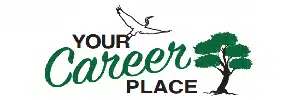Take 5: Making Communication Work … at Work
It’s about getting clearer, kinder, and more strategic in how you and I talk at work. I wrote this short guide at Your Career Place to give you five practical strategies—backed by research and real-world experience—that I use and recommend so your team communicates more effectively. You’ll find tips on when to speak up, when to listen, and how to craft concise messages that invite dialogue. At Your Career Place, I want to help you make every conversation count.

Key Takeaways:
- At Your Career Place, we recommend structuring teams with a busy central core that shares most information and focused peripheral teams that only exchange the importants—this keeps people informed without bogging everyone down.
- Lean into vulnerability to build trust: delegating and showing some openness helps teams collaborate more effectively than constant oversight or guarded behavior.
- Balance in-person and digital time—save face-to-face meetings for complex, high-stakes work and use remote tools for routine coordination to maintain workflow and relationships.
- Be crisp and compelling when you describe your work: give a short, clear hook that invites a follow-up question instead of a long monologue.
- Leaders should practice strategic silence to surface new ideas and develop talent—Your Career Place suggests setting meeting norms (for example, delayed leader remarks) so more voices can be heard.

Streamlining Communication: From Chaos to Clarity
I see teams move from noise to clarity when they adopt a few disciplined patterns: a clear structure for who shares what, agreed channels for different types of work, and norms that protect heads-down time. Drawing on Kellogg research and my work at Your Career Place, I push teams to treat communication as a workflow—one you can design, measure, and tweak—so your meetings, messages, and documentation actually speed decisions instead of slowing them.
Organize Teams to Share Information Efficiently
I use Matouschek’s core–periphery idea as a blueprint: put about 10–20% of interdependent teams in a “core” that shares almost everything, while peripheral teams report only mission-critical updates. Companies like Boeing and IBM effectively follow variants of this model; the payoff is fewer interruptions for peripheral teams and faster issue resolution for the core. I advise you to map dependencies, then assign roles so information flows where it’s needed without drowning everyone in noise.
Tools and Techniques for Seamless Information Flow
I recommend a small toolset plus firm norms: a single source of truth (confluence or a shared drive), Slack or Teams channels aligned to core/periphery responsibilities, 15-minute daily standups for the core, and weekly 30-minute syncs for peripheral updates. At Your Career Place I coach teams to label messages by urgency, archive decisions in a one‑page summary, and use a RACI matrix to cut ambiguity about ownership.
Drawing from Jillian Chown’s study of a cancer center, you should expect relocations or growth to shift face-to-face planning into email unless you design alternatives. I suggest real rules: escalate complex cases to an in-person huddle, limit async threads to decision-oriented updates only, and require a one-line decision at the top of shared docs. These concrete steps keep collaboration tight—so your tools serve your work, not the other way around.
The Power of Vulnerability: Building Trust in Teams
Vulnerability speeds up coordination by converting uncertainty into shared information: when you admit a risk or a gap, teammates can adjust plans rather than compensate blindly. Eli J. Finkel of Kellogg frames this as a trade-off—lean in or lock down—and I’ve seen teams at Your Career Place double their clarity simply by agreeing to surface dependencies early. That small cultural shift reduces rework and prevents costly surprises.
Embrace Vulnerability to Foster Authentic Connections
I coach leaders to signal trust by delegating ownership with clear guardrails: assign a task, set a 48‑hour checkpoint, and ask for one obstacle you need help with. Task vulnerability (relying on someone to deliver) and emotional vulnerability (sharing doubts about direction) both matter; when you model one, others mirror it. Use Eli Finkel’s framework to weigh the risk and treat vulnerability as a strategic choice, not a personality test.
Personal Stories that Enhance Team Cohesion
I recommend a simple ritual: two‑minute personal stories at the start of a monthly meeting—one prompt, one person. Stories about a formative failure or why someone joined the field create context for decisions and cut through posturing. That brief exchange signals psychological safety and gives you a practical lens for assigning stretch work without micromanaging.
To run this safely, I use three rules: timebox to two minutes, provide 2–3 starter prompts (e.g., “a setback that taught you something”), and have the leader go first to model candor. Try a 10‑minute slot in your next monthly all‑hands; you’ll notice quieter people contribute faster and cross‑functional handoffs feel less tense. Your Career Place teams have used this to accelerate onboarding and surface hidden expertise.
The Balancing Act: In-Person vs. Digital Dialogue
I’ve seen the trade-offs play out in studies and in practice: Jillian Chown’s research on a cancer center showed relocation led to less face-to-face planning and a shift to email, yet clinicians still convened in person for the most complex cases. At Your Career Place, I advise you to match mode to task—use in-person time for ambiguity and bonding, and digital channels for routine coordination—so your team preserves focus while keeping collaboration strong.
Finding the Right Mix for Your Team
Decide by task type: reserve in-person sessions for joint problem‑solving, onboarding, and high‑stakes decisions, and run status updates, follow-ups, and documentation asynchronously. I often pilot a two‑week experiment where teams try one extra in-person workshop and one fewer weekly meeting to see how workflow changes—use that data to set a repeatable cadence your people can follow.
Best Practices for Effective Remote Communication
I coach teams to standardize norms: publish clear agendas 24 hours ahead, cap meetings at 45 minutes, use focused async tools (shared docs, task boards), and have short daily or biweekly stand-ups for alignment. At Your Career Place, I recommend assigning a meeting owner who enforces the agenda and records decisions so remote participants aren’t left behind.
For deeper gains, provide templates (agenda, decision log), set response windows for async messages (for example, 24–48 hours), and designate “camera‑on” meetings versus info‑only updates. I also track one simple metric—average meeting time per week—to judge whether changes reduce overhead and free up heads‑down work for your team.
The Art of Engagement: Speaking with Impact
At Your Career Place I push people to trade long monologues for tight, memorable moments: a 30-second opener that states your role, the problem you solve, and one concrete result. I ask you to aim for a three-part structure—hook, evidence, ask—because audiences retain narrative beats far better than streams of facts. Practically, that means rehearsing a 30–45 second version for meetings and a 15–20 second “elevator” line for quick introductions.
Be Crisp and Compelling When Talking About Work
Craig Wortmann’s advice about miscalibration rings true: I coach clients to avoid “I’m a manager” or 10-minute walk-throughs. Use a three-sentence formula—what you do, who benefits, one concrete outcome—and keep it to 20–30 seconds. For example: “I lead product strategy for mid-market payments, helping teams shorten checkout flows; last quarter we cut abandonment by a third. How does your team handle payments?” That invites a follow-up instead of a monologue.
Engaging Your Audience: Strategies for Better Communication
I encourage questions early—one open question in the first minute—because engagement hooks attention: ask “What would success look like here?” and tailor the next two minutes to that response. Use a single, vivid case study lasting 30–60 seconds, limit slides to six bullets or one image each, and deliberately pause for 3–5 seconds after key points; silence often prompts contributions. These tactics increase interaction and make your message stick.
Digging deeper, I use a simple timing framework in workshops: Hook (10s), Signal the agenda (20s), Evidence with a 30–60s case, then a clear Call to Action (10–20s). In practice, clinicians in Jillian Chown’s study still convened in person for the toughest cases—apply that judgment to your sessions: when complexity is high, plan for live collaboration; when it’s routine, use concise asynchronous updates. At Your Career Place I run role-play drills to internalize these timings so you default to engagement, not monologue.
The Strength of Silence: Creating Space for Others
I’ve seen leaders confuse noise with progress; Sanjay Khosla’s idea to “mute the boss” flips that script. At Your Career Place I advise turning some meetings into discovery workshops where senior voices hold back so junior talent can surface ideas. Jillian Chown’s research on clinical teams shows that deliberate choices about how people gather change who speaks and how problems get solved—use silence strategically to protect thinking time and invite unexpected contributions.
Know When to Keep Silent to Foster Collaboration
Try a simple rule: open strategy sessions with five minutes of silent reflection or written idea-sharing before anyone talks. I’ve used this in cross-functional workshops to prevent dominant voices from steering the agenda; outcomes shifted from repetition to fresh proposals. You can also ask leaders to act as note-takers or moderators rather than presenters, which signals you value others’ perspectives and creates room for development.
The Benefits of Listening Over Speaking
Active listening often yields higher-quality ideas because it encourages building on partial insights rather than shutting them down. Khosla frames silence as a development tool, and I pair that with structured listening techniques—paraphrasing, asking one open follow-up, and pausing—to turn quieter suggestions into actionable options. At Your Career Place I coach teams to use these habits to broaden participation and surface practical innovations.
Practical steps make listening measurable: track speaking time by role and aim for senior leaders to occupy less than 30% of airtime in exploratory meetings, use a “no-interruption” rule for the first round of responses, and require a brief paraphrase before critique. Those small constraints raise psychological safety, increase idea diversity, and, over several sessions, visibly improve decision quality.
Conclusion
Summing up, at Your Career Place I urge you to adopt these five communication habits—organize teams for efficient flow, lean into thoughtful vulnerability, balance in-person and digital contact, speak crisply, and sometimes stay silent to let others shine. I believe these steps will help your team collaborate and innovate more effectively. At Your Career Place, I’ll keep sharing practical advice to help you improve communication at work.
Thank you for visiting Your Career Place. Here are some other articles to review.
https://yourcareerplace.com/lead-like-a-pro-managing-meetings-for-success/
https://yourcareerplace.com/how-speaking-slower-influences-consumer-behavior/




